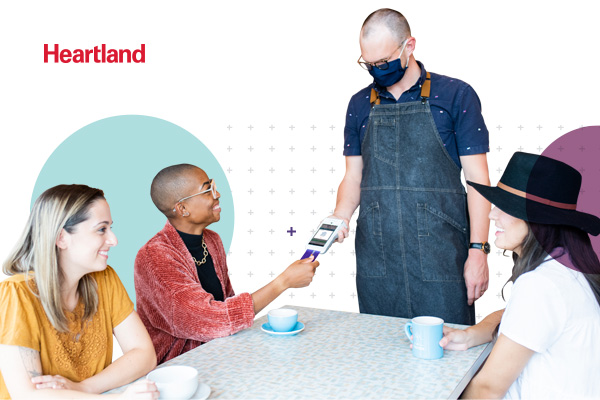
When “Daniel” shut down due to COVID-19, Chef Daniel Boulud quickly developed creative weekly menus, powered by an online delivery and carryout platform. His pivot shows how some restaurateurs have faced new circumstances with remarkable resilience and innovation.
“In response to the changed environment, the first thing restaurants are doing is purchasing a digital point of sale,” says Andre Nataf, senior vice president of point of sale at Global Payments’ company Heartland. “In addition to accepting digital transactions, they need to have tools to engage with customers, such as email marketing capabilities, loyalty programs and a robust website presence.”
New customer expectations
About 70% of consumers said eating at a restaurant will help them feel normal again, according to a nationwide Global Payments survey of 1,000 consumers. However, when they do arrive, they’ll be more wary of safety, cleanliness and quality.
The good news: when people feel safe, they’re likely to return. Use technology to build loyalty and trust:
Digital ordering. Customers can reserve, order and pay from their mobile apps and devices. Digital also minimizes interactions between delivery drivers and staff.
Touchless payments. Restaurants can add QR codes to digital drive-thru menu boards or restaurant receipts, with customers ordering and paying with Apple Pay or Google Wallet. About 44% of consumers are willing to tap to pay, up from 29% before the pandemic, according to the Global Payments survey.
Digitally powered inventory. Restaurants can control menus with a click or a tap for instantly reflected changes, even with multiple locations.
Cloud agility. Cloud-based platforms allow restaurants to streamline tasks including kitchen management and drive-thru operations. They also help with customer intelligence and social media reputation management, centralizing reporting and analytics for deeper, faster insights.
Guest list management. Digital POS Systems allow customers to place orders while waiting and receive texts when their tables are ready.
UV-C disinfection. Ultraviolet light can kill or inactivate 99% of microorganisms on POS devices and kiosks. It can be added to existing screens and monitor surfaces for when they’ve been cleaned.
Low-contact server tips. Cloud-based tip processing allows employees to receive funds on prepaid cards, and tipping software like Netspend® Tip Network™ integrate with POS systems to digitally allocate tips.
Consumers are more comfortable in a digital world–technology will only play a bigger role in the future.
